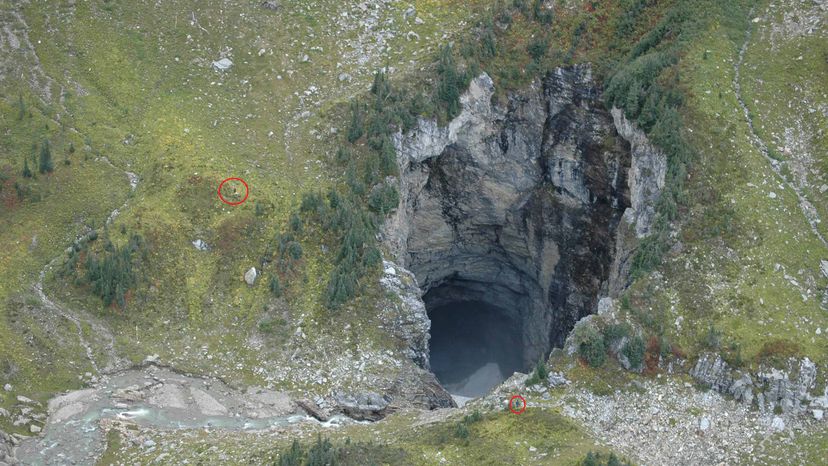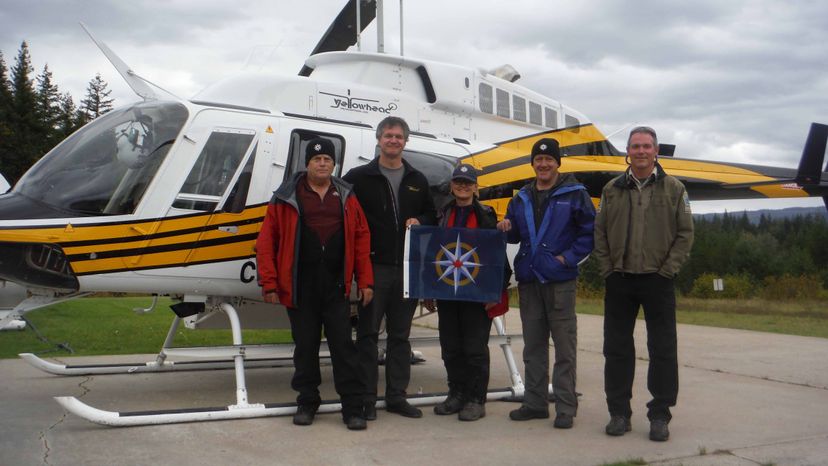
Key Takeaways
- A massive undiscovered cave was recently found in British Columbia, Canada, spanning over 5 kilometers in length.
- The cave, named "Sarlacc's Pit," is among the largest known caves in Canada.
- Its discovery highlights the ongoing importance of exploration in uncovering hidden natural wonders and expanding our understanding of the Earth's geology.
You might assume that in this day and age, there are no unexplored natural wonders left on the planet. But that wouldn't be correct, as demonstrated by the recently announced discovery of a massive cave in a remote area of British Columbia.
The cave, which doesn't yet have an official name, has an entrance in a pit that's the size of a football field and descends an estimated 600 feet (183 meters) down into the Earth. It's located on the edge of a mountainside in the vastness of Wells Gray Provincial Park, which is roughly 300 miles (477 kilometers) northeast of Vancouver. There's a small river flowing into the entrance of the underground passage, which apparently extends horizontally for 1.3 miles (2.1 kilometers) into a nearby valley with a lower elevation, where there the water flow exits.
Advertisement
"There's nothing like it in Canada," John Pollack, an archaeological surveyor, veteran cave explorer and governor of the Royal Canadian Geographical Society, explains. Pollack, who was part of a five-person team for the society that visited the site in September 2018, compared its scale to massive caves found in southeast Asia.
Fascinated with life underground? Check out our article on Coober Pedy, Australia, where pretty much everyone lives down under.
The cave, which was formed by erosion and dissolution of rock, probably has existed for somewhere between tens and hundreds of thousands of years, Pollack says. Nevertheless, it apparently had never been found by humans until the spring of 2018. That's when helicopter pilot Ken Lancour and wildlife biologist Bevan Ernst from British Columbia's Ministry of Forests, Lands, Natural Resource Operations and Rural Development, who flew over the area to conduct a survey of caribou, spotted the entrance from the air.

Canadian wildlife researchers had flown over the site before, but somehow hadn't seen the enormous pit. Pollack speculated that it may have been obscured until recently by the area's typically heavy snow cover, which has been gradually dissipating because of climate change. "It could be that the snow camouflaged enough, until maybe you had a low snow year, or a low avalanche year, and you flew over it at the right angle to see it," he says.
It's unlikely that anyone ever stumbled upon the cave from ground level. "The location is very remote, not one people would walk into," Pollack says.
When Pollack saw the photos taken by the wildlife researchers, "I immediately said, were are going there. It was that good."
A few months later, the society's exploration team, which in addition to Pollack also included helicopter pilot Lancour, geologist Catherine Hickson, veteran caver Lee Hollis and provincial Ministry of Environment and Climate Change area supervisor Tod Haughton, made a brief visit to the site, whose exact location is being kept secret. As Pollack used equipment to survey the entrance of the pit and document it in 3D imagery, Hollis rigged ropes to one side of the waterfall and carefully descended about 262 feet (80 meters), before the volume of water flow prevented him from going farther, according to an article posted on the Canadian Geographic website.
The explorers only stayed at the site briefly, but explorers will study both entrances to the cave and venture deeper inside at a later date.
That's not going to be easy. In the wintertime, the river that flows into the cave deposits 353 cubic feet (10 cubic meters) of water into the entrance every second, the equivalent of a couple of dump-truck loads. Even in the summer, when the explorers plan to visit, that flow will be down to the equivalent of five or six bathtubs of water per second, but that water still will be a dangerously cold — 35 to 40 degrees Fahrenheit (2 to 4 degrees Celsius). Fall or wade into it and there's a risk of hypothermia, which is why the explorers will rappel down the dry rock alongside the waterfall, and then rig handlines along the walls of the passageway. It's not the sort of thing that anyone except elite, highly skilled veteran cave explorers would want to attempt.
But the big cave may actually lead to other discoveries. All the publicity about the discovery of the cave — which merited a lengthy article in The New York Times — has led to two other pilots contacting the society about things that they've seen from the air in remote parts of western Canada. Pollack says that one of the sightings turned out to be a cave that had been explored back in the 1990s, but the other — if it ultimately checks out — may turn out to be a previously undiscovered large cave in a new area. "We're working on getting satellite photos," he says.
There's also a possibility that other big caves may be found in Wells Gray Provincial Park as well. Again, Pollack says it all goes to show how much of the world still remains unexplored. "That's the real beauty of this story," he says. "This is an example of how people who have their eyes open may still make some amazing discoveries."
Advertisement
